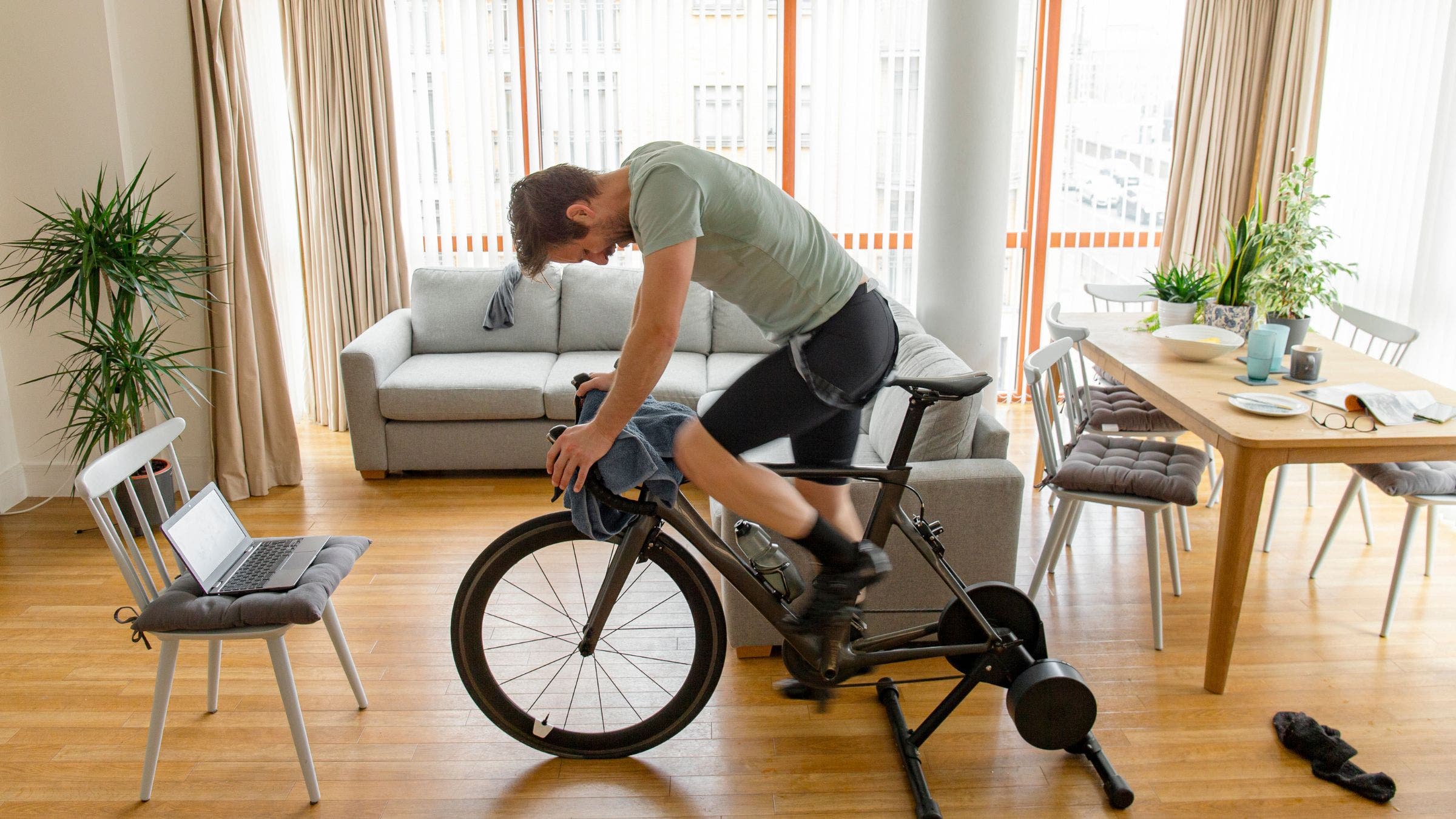How Quickly Do I Lose My Bike Fitness?

Whether you're taking days or weeks off from your bike, you might be wondering how quickly you'll lose your cycling fitness. Good news: Not as quickly as you think. (Photo: Eric Arce)
In a perfect world, we’d all experience uninterrupted training and a linear increase in fitness as we work to get faster and stronger on the bike. But at some point, illness, injury, mechanical woes, or just plain life can cause disruptions in any training schedule. Even in the best-case scenario, a period of relative rest and recovery is necessary both mentally and physically at the end of a long season – if you’ve ever left your bike packed up in a bike box for a few weeks after your final race of the season, you know this to be true. But after spending months on end building up time in the saddle, how long does it take to lose your bike fitness?
No one likes seeing their peak race fitness slide into recalibrating a power meter 15 minutes into a ride, insisting that it can’t possibly be as low as it’s reading for your heart rate and effort. (We’ve all been there, and it’s not fun.) But losing your bike fitness doesn’t happen as quickly as you might fear.
RELATED: How Quickly Do I Lose My Swim Fitness?
How quickly will I lose my bike fitness? What the science says
Highly trained, experienced, very fit endurance athletes can lose some aerobic fitness within two to four weeks, while those with lower starting fitness levels and shorter training histories may be able to take a few weeks off with less of an initial hit. In other words, higher starting points mean more rapid drop-offs from that top end.
However, these losses tend to level off after about eight weeks in highly-trained individuals, who retain fitness and stay at higher levels than their sedentary counterparts. If your fitness is recently gained, it’s likely to be completely lost with longer (8+) week layoffs.
When it comes to the more technical aspects of cycling, experience is key. Those with longer histories of outdoor riding will likely be able to withstand longer times away from riding, without any significant decrement in handling abilities.
Participating in other physical activity affects this rate, as well as which training variables are decreased. Volume can be decreased significantly without much impact, provided that intensity frequency are maintained (logically, given this is the very basis of a taper). At the extreme end, though, a few days of bed rest can cause fitness loss. So, while a week of being laid up with illness might cause a brief hit to cycling fitness, leaving the bike behind but running daily during a vacation, or hitting the hotel bike for a few sprint-based workouts here and there won’t have much (if any) of a deleterious impact on overall cycling fitness.
What about age? Not surprisingly, it plays a role in how quickly you lose your bike fitness. At one end of the spectrum, when looking at pure muscle strength, youth ages 10-13 were able to withstand a four-week detraining period without any loss. At the other end, older (65–75 year old) men and women sustained greater strength losses in their quads than their younger (20-30 year old) counterparts over a longer time period. It’s also well-known that although VO2 max inevitably decreases with age in Masters athletes, continued endurance training can help cut the losses by about half. Therefore, a loss of training will impact masters athletes disproportionately, as they also have to contend with normal age-related changes on top of typical detraining responses.

Where you’ll lose bike fitness first
The basic fact of training adaptations is that they reverse themselves without continued training stimulus. From a cardiovascular standpoint, VO2 max losses with detraining have been studied extensively, with decreases normally first becoming noticeable after about two weeks. Losses are variable, although in general, they occur proportionally and progressively over the first 7-8 weeks of training cessation, ranging from about 5-20%.
Initially, a loss in blood volume can occur in as little as two days of stopping exercise and reach losses of around 5-10% by 2-4 weeks of exercise cessation, leading to a decrease in stroke volume (the amount of blood pumped with each heartbeat) and increase in both resting and exercise heart rates by about equivalent percentages as volume loss (although, like with VO2 max, this tends to level off after longer periods in previously highly trained athletes).
After five weeks of training cessation, young road cyclists also showed decreases in red blood cell counts, hemoglobin, and hematocrit levels, impairing their overall ability to transport oxygen. It’s not all bad news, however – beneficial morphological changes with endurance training such as cycling stick around longer, and increases in heart size and strength did not decrease after 60 days.
Metabolically, changes also occur. A decrease in insulin sensitivity among the first alterations with the cessation of endurance training, often beginning within days. Muscle glycogen storage levels decline within a month. Resting metabolic rate decreases, with an increase in body mass occurring within five weeks in some cyclists. Respiratory exchange ratio increases in cyclists after four weeks of detraining, meaning that the body becomes more reliant on carbohydrates, and less efficient at burning fats for energy during exercise. Additionally, blood lactate levels begin to increase within three to four weeks of detraining, although in the long (4+ weeks) term, highly-trained athletes still maintain higher lactate thresholds than sedentary individuals.
At a muscular level, a decrease in mitochondrial enzyme activity begins to occur within about two weeks of training cessation, leading to a loss of oxidative capacity-or, more simply, muscles begin to lose their ability to utilize oxygen as efficiently, leading to more fatigue. Other muscular changes tend to occur more slowly. Endurance athletes may experience a decreased proportion of fatigue-resistant type I (slow-twitch) and type IIA (fast-twitch glycolytic) muscle fibers after about eight weeks. Overall strength tends to be maintained for about four weeks, although top-end power might begin to decline a bit earlier.
RELATED: What is Power-to-Weight Ratio (and Why Does it Matter)?
How long does it take to get cycling fitness back?
The time it takes to regain bike fitness becomes an interplay of many of the previously mentioned factors: time away, desired fitness level, activity levels during the layoff, age, and prior experience. While highly-trained competitive athletes will restart at higher overall VO2 max and fitness levels, they will also find themselves needing to climb back up to a higher ledge. Lower-level athletes may be able to return to their prior levels within about half to two-thirds of the layoff time, while their high-level counterparts may need to plan about two weeks of retraining for every week of detraining to return to peak fitness levels.
Some improvements will progress more quickly than that: within the first training block of the season, exercise heart rates tend to start to normalize, substrate utilization improves, and riding just starts to feel more “normal.” But don’t expect to be setting PRs two weeks back into training, either.
When it comes to speeding up the process of regaining bike fitness, consider sprinkling in some intensity, which is a bit safer to do with a non-impact activity such as cycling. Research has shown high intensity interval training (HIIT) (think short, hard reps) provides similar (or in some cases, superior) cardiovascular and muscular adaptations to steady-state endurance training, making it an efficient way to maximize available training time.
Also, consider strength training! Strength training for cyclists has been shown to improve cycling strength and efficiency and increase time to exhaustion, showing benefits over cycling alone in a ten-week preseason period.
RELATED: Top Coaches Provide Plans for Returning to Structured Training
Mistakes to avoid when rebuilding cycling fitness
Although overuse injuries in cycling occur at lower rates than in running, they do still happen, with the lower back and anterior knee being particularly vulnerable. So don’t expect to plug back in directly where you left off – give your body time to adjust to the repetitive knee loads and prolonged forward flexed postures of riding.
Ease into terrain, as well. Low cadences and climbing increase anterior knee pressures, so don’t start Everesting in your first week back after a layoff. Tentative riders would also be better served by riding some tamer roads, just to brush up on handling skills prior to tackling more technical fare.
Also, remember that one of the physical changes of detraining involves a greater reliance on carbohydrates for energy during exercise. Don’t skimp on fueling, and pack an extra gel or two, even if you don’t think you’ll need it – your body may beg to differ halfway through your ride.
Don’t fret if you’re taking some time away from the saddle! Will changes happen? Sure, but a few weeks away frmo the bike won’t erase years of adaptations from riding. Life happens, physical and mental recovery is necessary between seasons, and the process of regaining fitness can be its own reward.
RELATED: Ask A Trainer: Why Does the Front of My Knee Hurt on the Bike?
Jennie Hansen is a physical therapist, Ironman champion, and USAT Level 1 triathlon coach with QT2 systems. Hansen has a background as a collegiate and professional runner, as well as a number of professional triathlon podiums. She has been in the sport for over a decade.